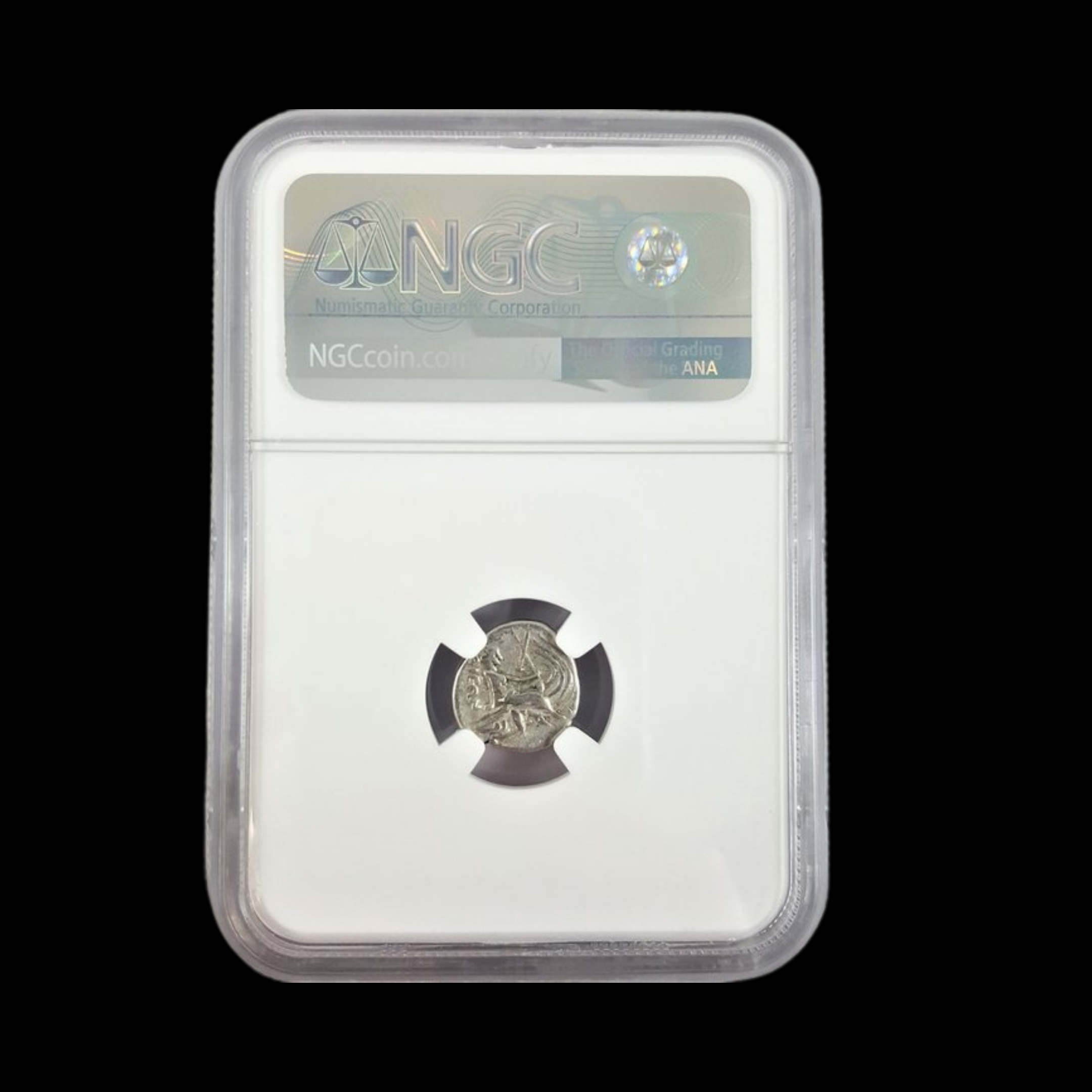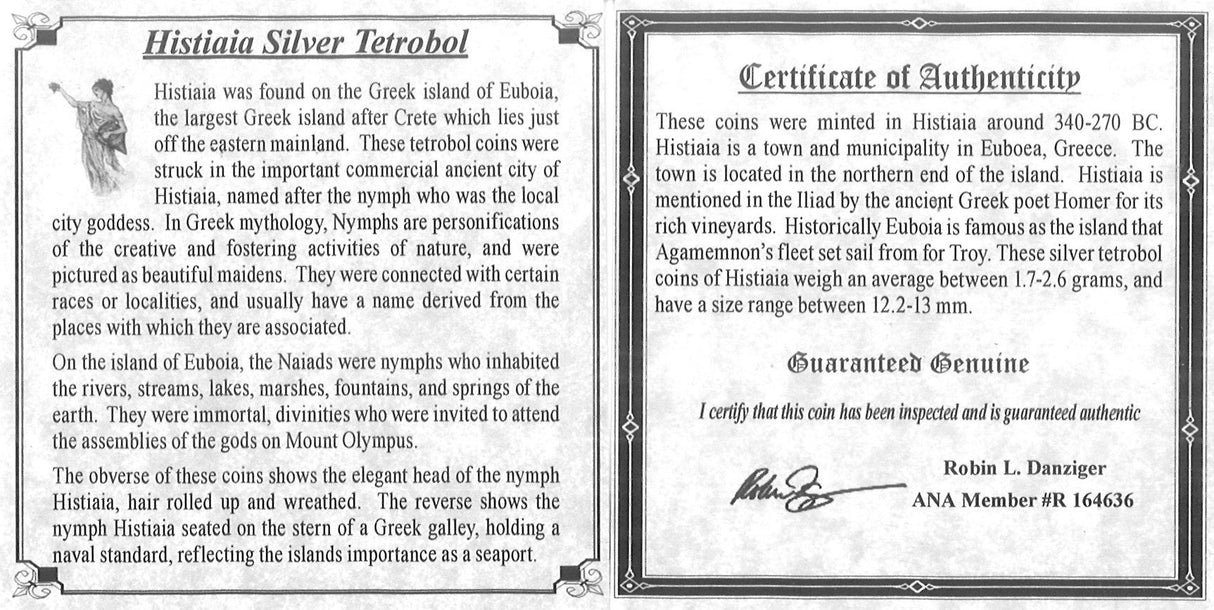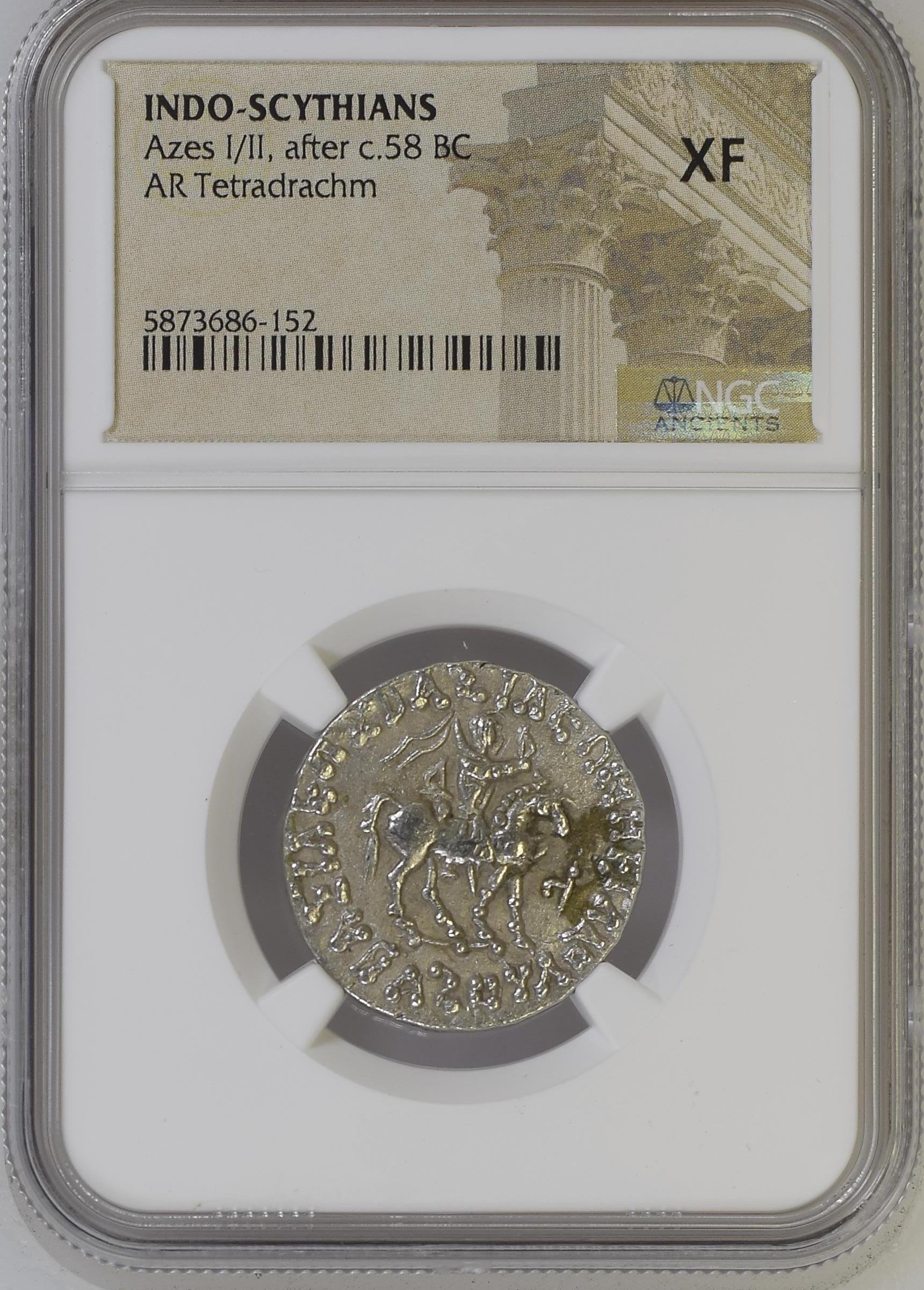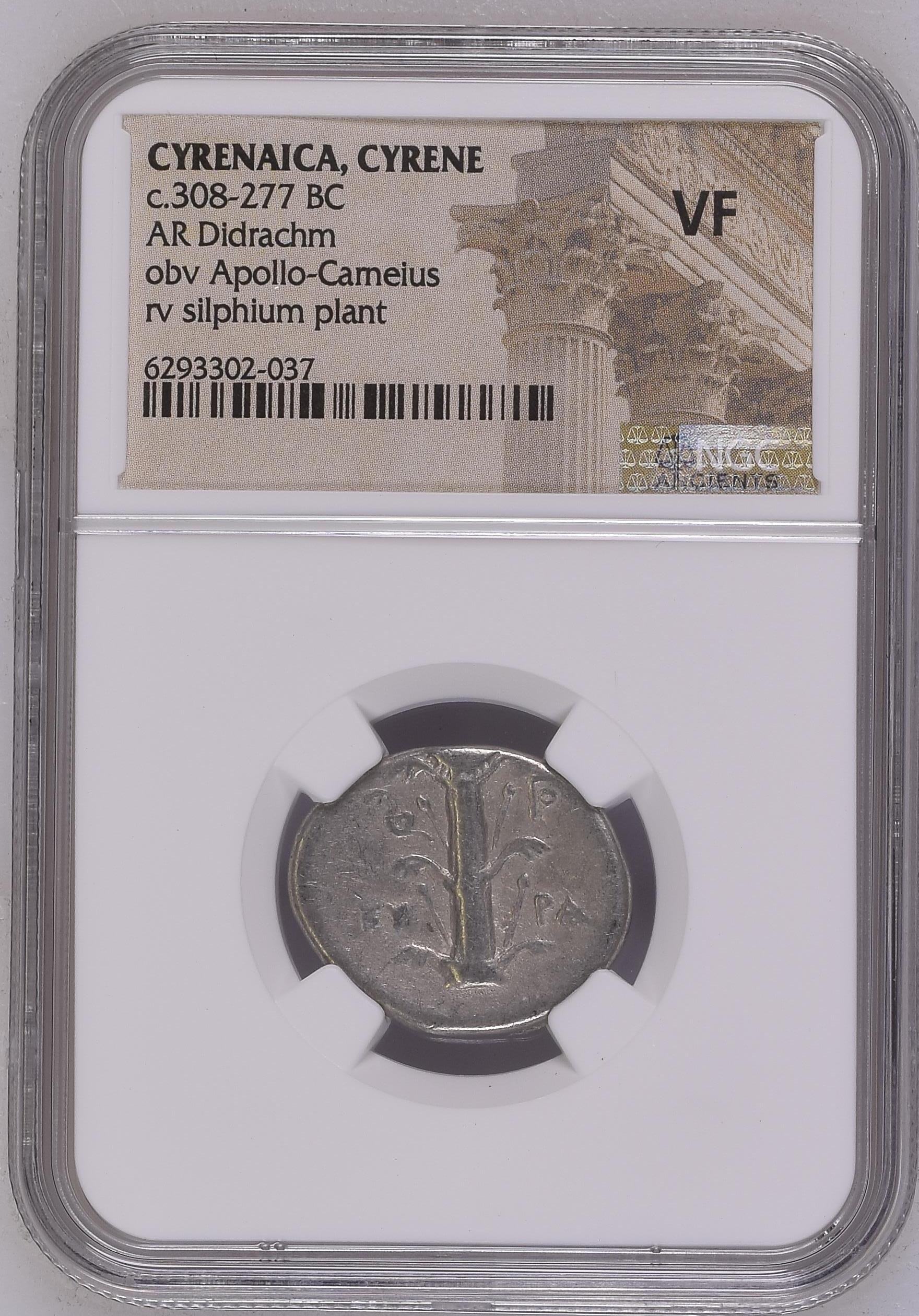 Image 1 of 2
Image 1 of 2

 Image 2 of 2
Image 2 of 2



Macedonian Bronze Coin of Alexander the Great (about 2350 years ago)
This bronze coin was issued during the reign or shortly after the death of Alexander III (commonly known as Alexander the Great), who created one of the ancient world's largest empires. Minted at an uncertain location in Western Asia Minor (modern western Turkey), this coin represents the widespread currency system that helped unify Alexander's vast territories stretching from Greece to India.
Coin Description:
Front side: Head of Herakles (Hercules) wearing a lion skin headdress, a deity Alexander claimed as an ancestor and frequently depicted on his coinage
Back side: Bow in quiver positioned leftward, with a club pointing right above a torch pointing left; Greek inscription "ΒΑΣΙΛΕΩΣ" (of the King)
Technical Details:
Bronze composition, weighing 5.36 grams
No specific denomination mentioned (likely a standard unit in Alexander's bronze currency system)
Reference: Price-2800
No certification mentioned
Date: 336-323 BCE (possibly posthumous)
Condition: Not specified
Historical Significance:
Alexander III transformed the Greek world by conquering the Persian Empire and spreading Hellenistic culture across the eastern Mediterranean and deep into Asia. This coin, from the western portion of his empire (modern Turkey), demonstrates how his monetary system helped unify diverse territories and economies. The Herakles imagery was carefully chosen to emphasize Alexander's claimed divine heritage, while the weapons on the reverse symbolize the military might that enabled his conquests.
This bronze coin was issued during the reign or shortly after the death of Alexander III (commonly known as Alexander the Great), who created one of the ancient world's largest empires. Minted at an uncertain location in Western Asia Minor (modern western Turkey), this coin represents the widespread currency system that helped unify Alexander's vast territories stretching from Greece to India.
Coin Description:
Front side: Head of Herakles (Hercules) wearing a lion skin headdress, a deity Alexander claimed as an ancestor and frequently depicted on his coinage
Back side: Bow in quiver positioned leftward, with a club pointing right above a torch pointing left; Greek inscription "ΒΑΣΙΛΕΩΣ" (of the King)
Technical Details:
Bronze composition, weighing 5.36 grams
No specific denomination mentioned (likely a standard unit in Alexander's bronze currency system)
Reference: Price-2800
No certification mentioned
Date: 336-323 BCE (possibly posthumous)
Condition: Not specified
Historical Significance:
Alexander III transformed the Greek world by conquering the Persian Empire and spreading Hellenistic culture across the eastern Mediterranean and deep into Asia. This coin, from the western portion of his empire (modern Turkey), demonstrates how his monetary system helped unify diverse territories and economies. The Herakles imagery was carefully chosen to emphasize Alexander's claimed divine heritage, while the weapons on the reverse symbolize the military might that enabled his conquests.
This bronze coin was issued during the reign or shortly after the death of Alexander III (commonly known as Alexander the Great), who created one of the ancient world's largest empires. Minted at an uncertain location in Western Asia Minor (modern western Turkey), this coin represents the widespread currency system that helped unify Alexander's vast territories stretching from Greece to India.
Coin Description:
Front side: Head of Herakles (Hercules) wearing a lion skin headdress, a deity Alexander claimed as an ancestor and frequently depicted on his coinage
Back side: Bow in quiver positioned leftward, with a club pointing right above a torch pointing left; Greek inscription "ΒΑΣΙΛΕΩΣ" (of the King)
Technical Details:
Bronze composition, weighing 5.36 grams
No specific denomination mentioned (likely a standard unit in Alexander's bronze currency system)
Reference: Price-2800
No certification mentioned
Date: 336-323 BCE (possibly posthumous)
Condition: Not specified
Historical Significance:
Alexander III transformed the Greek world by conquering the Persian Empire and spreading Hellenistic culture across the eastern Mediterranean and deep into Asia. This coin, from the western portion of his empire (modern Turkey), demonstrates how his monetary system helped unify diverse territories and economies. The Herakles imagery was carefully chosen to emphasize Alexander's claimed divine heritage, while the weapons on the reverse symbolize the military might that enabled his conquests.
Alexander III of Macedon (Ancient Greek: Ἀλέξανδρος, romanized: Alexandros; 20/21 July 356 BC – 10/11 June 323 BC), most commonly known as Alexander the Great,[c] was a king of the ancient Greek kingdom of Macedon.[d] He succeeded his father Philip II to the throne in 336 BC at the age of 20 and spent most of his ruling years conducting a lengthy military campaign throughout Western Asia, Central Asia, parts of South Asia, and Egypt. By the age of 30, he had created one of the largest empires in history, stretching from Greece to northwestern India.[1] He was undefeated in battle and is widely considered to be one of history's greatest and most successful military commanders.[2][3][4]
Until the age of 16, Alexander was tutored by Aristotle. In 335 BC, shortly after his assumption of kingship over Macedon, he campaigned in the Balkans and reasserted control over Thrace and parts of Illyria before marching on the city of Thebes, which was subsequently destroyed in battle. Alexander then led the League of Corinth, and used his authority to launch the pan-Hellenic project envisaged by his father, assuming leadership over all Greeks in their conquest of Persia.[5][6]
You Might Also Like














